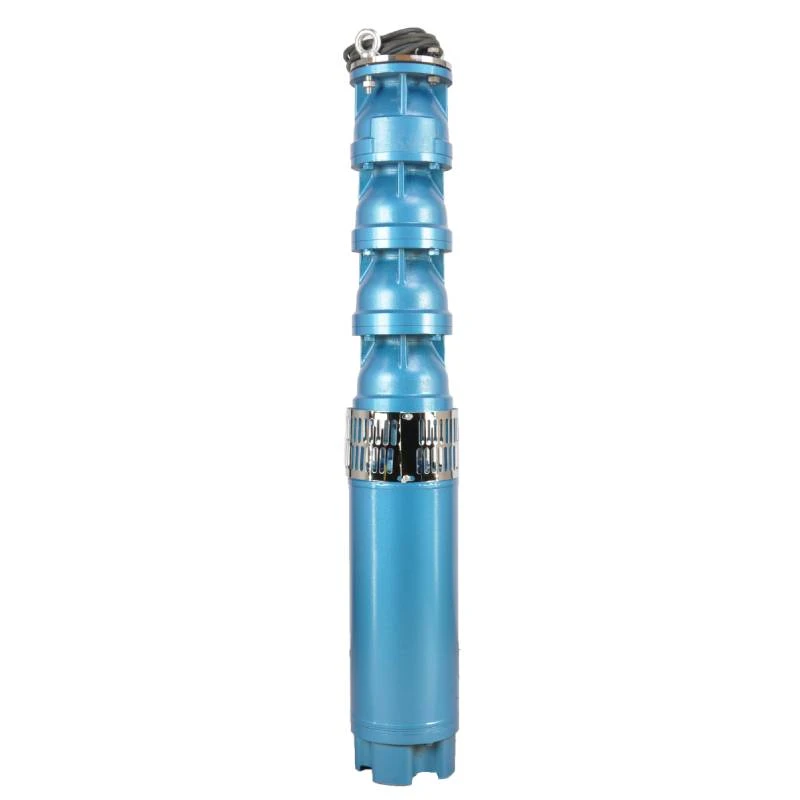ធ្នូ . 15, 2024 10:55 Back to list
Versatile Submersible DC Pump for Efficient Water Transfer and Irrigation Solutions
The Versatility and Efficiency of Submersible DC Pumps
Submersible DC pumps have gained significant attention in various industries due to their unique characteristics and operational efficiency. Unlike traditional pumps, which often rely on external power sources, submersible DC pumps can function underwater, making them an ideal choice for various applications, including water supply, drainage, and wastewater management. This article explores the advantages, applications, and technological advancements of submersible DC pumps.
Advantages of Submersible DC Pumps
One of the primary benefits of submersible DC pumps is their compact design. These pumps are installed below the water surface, which minimizes the need for complex piping and reduces the risk of leakage. Furthermore, submersible DC pumps are often quieter compared to other types of pumps, as their operation occurs beneath the water level, effectively muffling the sound.
Energy efficiency is another notable advantage. Many submersible DC pumps utilize brushless direct current (DC) motors, which are more efficient than their alternating current (AC) counterparts. This efficiency leads to lower energy consumption, ultimately reducing operational costs. Additionally, the ability to operate directly off batteries or solar power systems allows these pumps to be used in remote locations where conventional power sources are unavailable, making them highly versatile.
Applications of Submersible DC Pumps
The applications of submersible DC pumps are diverse and span various industries. In agricultural settings, these pumps are often used for irrigation purposes. They can draw water from wells or nearby water sources, helping farmers maintain their crops efficiently. The adaptability of submersible DC pumps to varying water depths and conditions makes them well-suited for agricultural tasks.
submersible dc pump

In urban settings, submersible DC pumps are employed in stormwater management systems. These pumps efficiently remove excess water from basements, parking lots, and other low-lying areas, preventing flooding during heavy rainstorms. Their ability to handle solid particles and debris enhances their functionality in wastewater treatment, ensuring effective effluent management.
Another significant application is in aquaculture. Submersible DC pumps are used to circulate water in fish tanks and ponds, maintaining optimal conditions for aquatic life. These pumps help in controlling water temperature and distributing oxygen evenly, essential for fish health and growth.
Technological Advancements
The technology behind submersible DC pumps is continually evolving. Modern designs incorporate smart technology, allowing for real-time monitoring and control. Users can now monitor water levels, pump performance, and energy usage remotely via smartphones and other devices. This technological advancement ensures that the pumps operate efficiently and alerts users to any operational issues, thereby reducing downtime.
Moreover, advancements in materials and construction have enhanced the durability and longevity of submersible DC pumps. Many manufacturers are now using corrosion-resistant materials, extending the lifespan of these pumps in harsh environments. The integration of more robust seals and bearings also minimizes maintenance requirements, making them a more reliable choice over time.
Conclusion
In conclusion, submersible DC pumps have become a staple in various sectors due to their efficiency, versatility, and ease of use. Their ability to handle diverse applications—from agriculture to urban stormwater management—demonstrates their significant value in meeting modern pumping needs. As technology progresses, the capabilities of submersible DC pumps will continue to expand, providing even more efficient solutions for water management challenges. Whether in a rural setting or an urban environment, submersible DC pumps are set to play an essential role in sustainable water resource management for years to come.
-
Submersible Water Pump: The Efficient 'Power Pioneer' of the Underwater World
NewsJul.01,2025
-
Submersible Pond Pump: The Hidden Guardian of Water Landscape Ecology
NewsJul.01,2025
-
Stainless Well Pump: A Reliable and Durable Pumping Main Force
NewsJul.01,2025
-
Stainless Steel Submersible Pump: An Efficient and Versatile Tool for Underwater Operations
NewsJul.01,2025
-
Deep Well Submersible Pump: An Efficient 'Sucker' of Groundwater Sources
NewsJul.01,2025
-
Deep Water Well Pump: An Efficient 'Sucker' of Groundwater Sources
NewsJul.01,2025
-
 Submersible Water Pump: The Efficient 'Power Pioneer' of the Underwater WorldIn the field of hydraulic equipment, the Submersible Water Pump has become the core equipment for underwater operations and water resource transportation due to its unique design and excellent performance.Detail
Submersible Water Pump: The Efficient 'Power Pioneer' of the Underwater WorldIn the field of hydraulic equipment, the Submersible Water Pump has become the core equipment for underwater operations and water resource transportation due to its unique design and excellent performance.Detail -
 Submersible Pond Pump: The Hidden Guardian of Water Landscape EcologyIn courtyard landscapes, ecological ponds, and even small-scale water conservancy projects, there is a silent yet indispensable equipment - the Submersible Pond Pump.Detail
Submersible Pond Pump: The Hidden Guardian of Water Landscape EcologyIn courtyard landscapes, ecological ponds, and even small-scale water conservancy projects, there is a silent yet indispensable equipment - the Submersible Pond Pump.Detail -
 Stainless Well Pump: A Reliable and Durable Pumping Main ForceIn the field of water resource transportation, Stainless Well Pump has become the core equipment for various pumping scenarios with its excellent performance and reliable quality.Detail
Stainless Well Pump: A Reliable and Durable Pumping Main ForceIn the field of water resource transportation, Stainless Well Pump has become the core equipment for various pumping scenarios with its excellent performance and reliable quality.Detail
